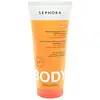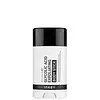What's inside
What's inside
 Key Ingredients
Key Ingredients

 Benefits
Benefits

 Concerns
Concerns

 Ingredients Side-by-side
Ingredients Side-by-side

Water
Skin ConditioningGluconolactone
Skin ConditioningCaprylic/Capric Triglyceride
MaskingGlycerin
HumectantOctyldodecanol
EmollientC10-18 Triglycerides
EmollientC15-19 Alkane
SolventSodium Hydroxide
BufferingLactic Acid
BufferingCetearyl Alcohol
EmollientHydroxyethyl Acrylate/Sodium Acryloyldimethyl Taurate Copolymer
Emulsion StabilisingParfum
MaskingSorbitan Caprylate
EmulsifyingPolyglyceryl-2 Stearate
EmulsifyingCitric Acid
BufferingSodium Gluconate
Skin ConditioningPolyacrylate Crosspolymer-6
Emulsion StabilisingGlyceryl Stearate
EmollientMicrocrystalline Cellulose
AbsorbentStearyl Alcohol
EmollientPropanediol
SolventBenzoic Acid
MaskingSphingomonas Ferment Extract
Skin ConditioningSodium Hyaluronate
HumectantPolysorbate 60
EmulsifyingSorbitan Isostearate
EmulsifyingWater, Gluconolactone, Caprylic/Capric Triglyceride, Glycerin, Octyldodecanol, C10-18 Triglycerides, C15-19 Alkane, Sodium Hydroxide, Lactic Acid, Cetearyl Alcohol, Hydroxyethyl Acrylate/Sodium Acryloyldimethyl Taurate Copolymer, Parfum, Sorbitan Caprylate, Polyglyceryl-2 Stearate, Citric Acid, Sodium Gluconate, Polyacrylate Crosspolymer-6, Glyceryl Stearate, Microcrystalline Cellulose, Stearyl Alcohol, Propanediol, Benzoic Acid, Sphingomonas Ferment Extract, Sodium Hyaluronate, Polysorbate 60, Sorbitan Isostearate
Octyldodecanol
EmollientCoco-Caprylate/Caprate
EmollientButyrospermum Parkii Butter
Skin ConditioningHelianthus Annuus Seed Wax
Skin ConditioningGlycolic Acid
BufferingOzokerite
Emulsion StabilisingCetearyl Alcohol
EmollientWater
Skin ConditioningPEG-100 Stearate
Glyceryl Stearate
EmollientSimmondsia Chinensis Seed Oil
EmollientSalicylic Acid
MaskingCocamidopropyl Dimethylamine
EmulsifyingAscorbyl Palmitate
AntioxidantTocopherol
AntioxidantHelianthus Annuus Seed Oil
EmollientOctyldodecanol, Coco-Caprylate/Caprate, Butyrospermum Parkii Butter, Helianthus Annuus Seed Wax, Glycolic Acid, Ozokerite, Cetearyl Alcohol, Water, PEG-100 Stearate, Glyceryl Stearate, Simmondsia Chinensis Seed Oil, Salicylic Acid, Cocamidopropyl Dimethylamine, Ascorbyl Palmitate, Tocopherol, Helianthus Annuus Seed Oil
 Reviews
Reviews

Ingredients Explained
These ingredients are found in both products.
Ingredients higher up in an ingredient list are typically present in a larger amount.
Cetearyl alcohol is a mixture of two fatty alcohols: cetyl alcohol and stearyl alcohol. It is mainly used as an emulsifier. Emulsifiers help prevent the separation of oils and products. Due to its composition, it can also be used to thicken a product or help create foam.
Cetearyl alcohol is an emollient. Emollients help soothe and hydrate the skin by trapping moisture.
Studies show Cetearyl alcohol is non-toxic and non-irritating. The FDA allows products labeled "alcohol-free" to have fatty alcohols.
This ingredient is usually derived from plant oils such as palm, vegetable, or coconut oils. There is debate on whether this ingredient will cause acne.
Due to the fatty acid base, this ingredient may not be Malassezia folliculitis safe.
Learn more about Cetearyl AlcoholGlyceryl Stearate is a mix of glycerin and stearic acid.
It is used to stabilize the mixing of water and oil ingredients. By preventing these ingredients from separating, it can help elongate shelf life. It can also help thicken the product's texture.
As an emollient, it helps soften skin and supports barrier-replenishing ingredients.
In cosmetics, Glyceryl Stearate is often made from vegetable oils or synthetically produced.
This ingredient may not be fungal-acne safe
Fun fact: The human body also creates Glyceryl Stearate naturally.
Learn more about Glyceryl StearateOctyldodecanol is a fatty alcohol. It is primarily used to enhance the texture of products.
As an emulsifier, Octyldodecanol helps prevent the oils and waters from separating. It also prevents ingredients from creating foam when shaken.
Octyldodecanol is created by reducing fatty acid to an alcohol.
Due to its high molecular weight, it does not get absorbed into the skin.
Learn more about OctyldodecanolWater. It's the most common cosmetic ingredient of all. You'll usually see it at the top of ingredient lists, meaning that it makes up the largest part of the product.
So why is it so popular? Water most often acts as a solvent - this means that it helps dissolve other ingredients into the formulation.
You'll also recognize water as that liquid we all need to stay alive. If you see this, drink a glass of water. Stay hydrated!
Learn more about Water